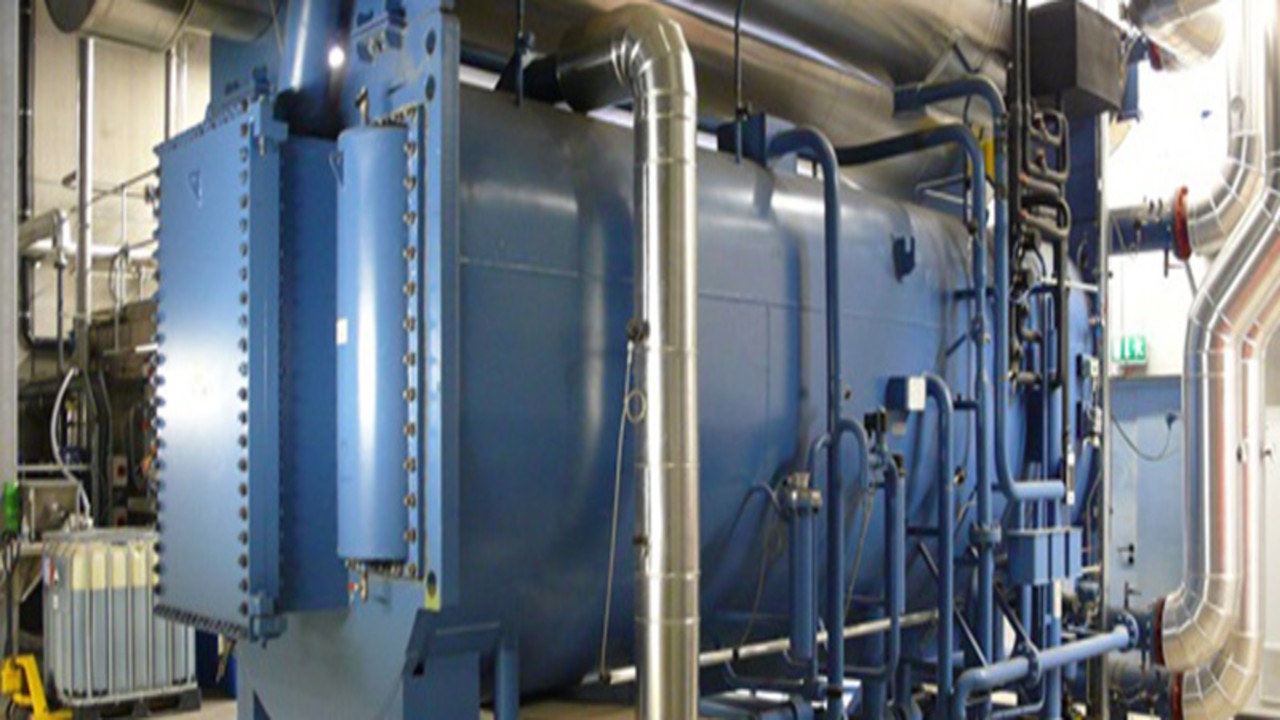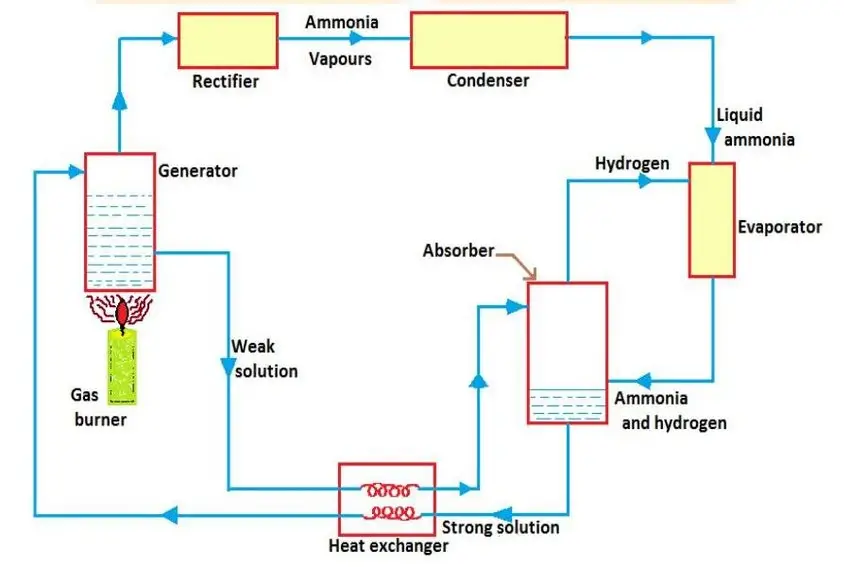When it comes to cooling large buildings or industrial processes, absorption chillers offer a unique twist on refrigeration. Unlike conventional systems that rely on electric compressors, these chillers use heat—often from waste sources or natural gas—to drive the cooling process. This makes them a standout choice for energy-conscious facilities. Whether you’re an engineer, a facility manager, or simply intrigued by innovative HVAC tech, this article unpacks how absorption chillers work, their key components, and why they’re a game-changer in specific scenarios.
What Is an Absorption Chiller?

An absorption chiller is a refrigeration system that leverages thermal energy to produce chilled water, which is then used to cool air or processes. Instead of mechanically compressing a refrigerant with a motor-driven compressor, it employs a chemical process called absorption, using a pair of fluids—typically water and lithium bromide (LiBr)—to transfer heat. This heat-driven approach sets it apart from vapor compression chillers, making it ideal for sites with abundant heat sources or a need to cut electricity costs.
The magic lies in its ability to turn waste heat—think steam from a power plant or hot water from a solar array—into useful cooling. Common in large-scale applications like hospitals, universities, or chemical plants, absorption chillers range from 10 tons to over 1,500 tons of cooling capacity, offering a sustainable twist on climate control.
How Does an Absorption Chiller Work?
The absorption cycle mimics the vapor compression cycle but swaps mechanical power for thermal energy. Here’s a step-by-step look at the process, using a water-lithium bromide system as an example:
- Испарение: The cycle begins in the evaporator, where liquid water (the refrigerant) is sprayed over a tube bundle carrying warm return water (e.g., 54°F or 12°C). Under a deep vacuum—about 0.12 psi (0.008 bar)—the water evaporates at a low temperature (around 40°F or 4°C), absorbing heat from the tubes. This chills the water inside to, say, 44°F (7°C), which is then pumped to cool a building.
- Поглощение: The water vapor produced drifts into the absorber, where it meets a concentrated lithium bromide solution. LiBr, a powerful absorbent, soaks up the vapor, turning it back into a liquid and releasing heat in the process. This diluted solution is kept under vacuum to enhance absorption efficiency.
- Generation: The now-diluted LiBr solution is pumped to the generator, where heat—typically from steam, hot water (above 190°F or 88°C), or a gas burner—boils off the absorbed water. This concentrates the LiBr again, while the water vapor rises to the next stage. The heat source is the engine here, driving the cycle without electricity.
- Конденсация: The water vapor enters the condenser, where it releases its heat to a cooling medium (usually water from a cooling tower at 85°F or 29°C). As it cools, it condenses back into a liquid, ready to return to the evaporator.
- Цикл повтор: The liquid water flows back to the evaporator through a throttle valve, dropping its pressure, while the concentrated LiBr returns to the absorber—keeping the loop alive.
This dance of heat and chemistry produces chilled water with minimal moving parts, relying on pumps rather than compressors for fluid movement. A single-effect chiller uses one heat stage, while double-effect models add a second generator for higher efficiency, often doubling the cooling output per unit of heat input.
Key Components of an Absorption Chiller

Each part is engineered for precision:
- Испаритель: A vacuum chamber where water evaporates, chilling the circulating water. Often a shell-and-tube design for maximum heat transfer.
- Absorber: Mixes vapor with the absorbent (LiBr), typically a spray system or packed bed to boost contact area.
- Generator: The heat-driven heart, separating refrigerant from absorbent. Steam at 15 psi (1 bar) or hot water at 240°F (115°C) is common.
- Конденсатор: Cools and condenses the vapor, usually paired with a cooling tower for heat rejection.
- Теплообменник: Preheats the dilute solution heading to the generator with hot concentrated solution returning to the absorber, slashing energy waste.
- Pumps and Valves: Move fluids and maintain vacuum—small but critical for flow control.
Some units use ammonia as a refrigerant with water as the absorbent, reversing the pairing for low-temperature applications like -20°F (-29°C) freezing.
Why Use Absorption Chillers?
Absorption chillers shine in specific contexts:
- Heat Utilization: They turn waste heat—say, from a cogeneration plant producing 300°F (149°C) exhaust—into cooling, slashing electric demand. A hospital might save 50% on cooling costs this way.
- Low Electricity Use: With pumps drawing just 5-10% of a compressor’s power, they’re perfect where electricity is pricey or unreliable.
- Тихая операция: No roaring compressor means noise levels hover around 60 dBA—library-quiet compared to 80+ dBA for vapor compression units.
- Eco-Friendly: Water-LiBr systems have zero ozone depletion potential (ODP), and ammonia options boast a GWP of 0, aligning with green goals.
Приложения
- District Cooling: A university campus might use a 1,000-ton absorption chiller, fueled by steam from a nearby power plant, to cool dorms and labs.
- Промышленные процессы: A chemical plant chilling exothermic reactions at 50°F (10°C) could tap waste heat from reactors, boosting efficiency.
- Food Storage: Ammonia-water chillers freeze fish at -40°F (-40°C) in coastal warehouses, leveraging gas burners where electricity is scarce.
Picture a brewery: fermentation tanks need steady 55°F (13°C) cooling. An absorption chiller, powered by hot water from a biomass boiler, keeps beer perfect while cutting grid reliance.
Benefits in Detail
- Энергоэффективность: Double-effect chillers hit a coefficient of performance (COP) of 1.2—producing 1.2 units of cooling per unit of heat—versus 0.7 for single-effect models.
- Cost Savings: In areas with cheap heat (e.g., $5/MMBtu gas vs. $0.15/kWh electricity), operating costs drop 30-40%.
- Долголетие: With fewer moving parts, units often last 25 years, outpacing compressor-based systems prone to wear.
Final Words
Absorption chillers turn heat into cold with a clever twist, offering a sustainable, low-electricity option for large-scale cooling. From slashing costs in heat-rich plants to quietly chilling campuses, they’re a niche but powerful tool. Whether you’re retrofitting a facility or exploring green tech, understanding absorption chillers can unlock smarter solutions. Curious to harness this heat-driven magic? Reach out to an HVAC specialist to see if it fits your cooling puzzle!
